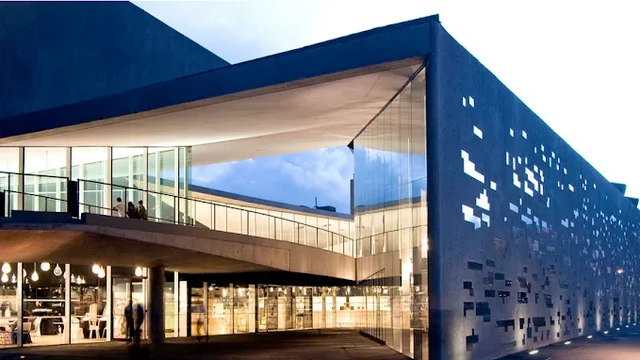TEA – Tenerife Espacio de las Artes
TEA, the Tenerife Espacio de las Artes, is a dynamic contemporary arts and cultural center located in the heart of Santa Cruz de Tenerife. Designed by the Pritzker Prize-winning Swiss architects Herzog & de Meuron, the building itself is a work of art. Inaugurated in 2008, TEA is a vibrant, modern space that integrates an art museum, a library, a cinema, and a photography center.
What Makes TEA – Tenerife Espacio de las Artes Special?
- World-Class Architecture: The building is a masterpiece of contemporary design by the renowned firm Herzog & de Meuron. It is made from dark concrete, featuring a dramatic diagonal ramp that cuts through the structure, connecting the upper city with the Barranco de Santos ravine below. Its façade is perforated with thousands of small, pixelated glass openings that flood the interior with patterned natural light.
- A Hub for Surrealism: TEA is home to the world's most extensive collection of works by the Tenerife-born surrealist painter Óscar Domínguez (1906-1957). This permanent collection provides a deep insight into the life and art of one of Spain's most important 20th-century artists.
- Integration of Art and Knowledge: Uniquely, TEA houses the Biblioteca Municipal de Santa Cruz (Central Municipal Library) within its structure. The library is open 24/7, seamlessly blending the experience of art, culture, and learning in a single, accessible public space.
- Focus on Contemporary and Canarian Art: Beyond Óscar Domínguez, TEA champions contemporary art with a special focus on Canarian and Spanish artists. Its temporary exhibitions are cutting-edge, showcasing photography, painting, sculpture, and installations.
- An Independent Cinema: The center includes the "Cine TEA," an intimate cinema dedicated to screening independent, avant-garde, and non-commercial films in their original language, offering a cultural alternative to mainstream movie theaters.
- A Living, Breathing Public Space: The building's design encourages public flow and interaction. Its open ramps, interior courtyards, and communal areas make it more than a museum—it's a gathering place for the community, connecting different parts of the city and different forms of culture.

